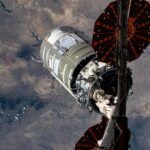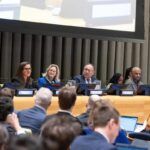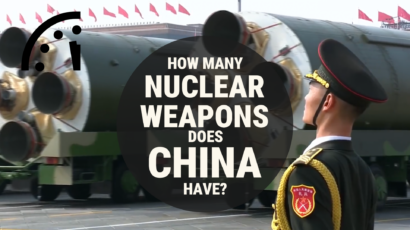Iran, Istanbul and the future
By Thomas R. Pickering | April 23, 2012
The outcome at Istanbul neither pleased everyone nor broadly disappointed many.
The outcome at Istanbul neither pleased everyone nor broadly disappointed many.
Those looking for an Iranian replay of some of its regular rebuffs of the six major powers (whether one calls them the EU3+3 or the P5+1) were disappointed in April. Tehran failed to behave badly and left the pro-war zealots in the United States and Israel still looking for the definitive fact that would set the dogs of war loose again in the region. In a more nuanced way, those looking for a diplomatic solution were made happy, not just by the lack of a clear failure at this meeting, but by the scheduling of a second meeting on May 23 in Baghdad. But if they are pleased, the players in these talks have also been tight lipped, probably a helpful indication that neither side wants to upset the apple cart or be the first to display rotten fruit.
The meeting was preceded by helpful signs from both sides, including invitation and response letters that were apparently simple, businesslike and — perhaps most important and unusual — “un-preconditioned.”
In Iran, the Supreme Leader re-issued his fatwa, which dates back at least to 2003, calling nuclear weapons haram, or “not permitted,” for Muslims at least and styling them for the first time as a “cardinal sin.” This pronouncement was complemented by guarded praise on his website for Obama’s speech to the American Israel Public Affairs Committee and the reissuance of a book on negotiations surrounding events affecting Shi’ism in the eighth century; the final two words of the book’s title are the optimistic “flexibility and compromise.”
On the P5+1 side, Obama’s AIPAC speech was itself a conciliatory move, emphasizing for the first time the “d” word — “diplomacy” — over military threats and noting that the Iranians hadn’t yet apparently decided to construct a nuclear weapon, a shared view of US and Israeli intelligence analysts. But the speech also made clear that the US red line in terms of acting militarily against the Iranian nuclear program was a direct Iranian decision to construct such a weapon, marking a difference from Israeli policy, which is centered on the more vague and uncertain concept of “nuclear capability.”
Even with another round of talks scheduled, not all the news on negotiations is positive. The press is reporting that the Iranians failed to accept a US proposal for a bilateral meeting, a move that would be in keeping with Foreign Minister Ali Akbar Salehi’s private statement during a September 2011 visit to New York that such would be Iranian policy until the United States changed its approach fundamentally. It also seems to be something of an open secret that the P5+1 countries are still not all on the same page regarding their positions on the Iranian nuclear program.
Two thoughts at this point are relevant for the future of Iranian negotiations: First, the openness of both sides to “expert-level” talks — such as those between the assistants to EU foreign policy chief Lady Catherine Ashton and the Iranian representative to the talks, Saeed Jalili — is at least an effort to take things from the general and procedural toward the potentially specific. The Iranian side seems to be interested in a step-by-step process that will make obligations reciprocal and presumably equal in some fashion, and that is based on the Nuclear Non-Proliferation Treaty, the latter element a code word that conveys the Iranians want acceptance of their right to enrich uranium, presumably for civil purposes only. Such an agreement could be in accord with the treaty, but it would run counter to the Security Council resolution that seeks a freeze on enrichment in Iran. There are now new openings for progress. Experts could help bridge the gaps. The parties’ willingness to try to do so will be a further positive signal.
The second thought: The current political situation provides some impetus for progress. Given a willingness on both sides to seek agreement, the pressure of sanctions against Iran, and Israeli interest in some kind of a military strike before the US elections, efforts to maximize this opening would constitute a wise and fruitful course of action.
Many have postulated that a first step could build around the very simple proposition of ending Iranian enrichment at 20 percent uranium 235, in return for a Western supply of fuel elements (or “plates”) for the Tehran Research Reactor, which is used to produce radioactive medical isotopes for what Iran claims are 800,000 cancer patients annually. Iran has produced at least one fuel element for testing in the reactor, but this is certainly not a sign that the Iranians are ready for full independence in this regard (contrary to Iran’s statements that imply such). In terms of the physics of the process, 20 percent enrichment (actually, 19.75 percent) takes the Iranians more than halfway to the level of enrichment that would be useful for weapons. The P5+1 and Israel have serious concerns in this regard are likely to insist on limitations.
The cessation of 20 percent enrichment alone will likely not assuage those concerns. Some have suggested a cap could be put on Iranian enrichment at the 3.5 to 5 percent level, which equates to the low-enriched uranium used in power reactors. There is also the thought that the accumulated stock of 20 percent material in Iran — estimated at 100 to 110 kilograms — should be absorbed in the process, perhaps by being exchanged for new fuel elements manufactured in another country, perhaps by being blended back down to 3.5 percent enrichment, and perhaps by a combination of both practices. Whatever course is chosen, it would have to be maintained under the full oversight of the International Atomic Energy Agency (IAEA), the UN’s atomic watchdog.
The final piece of an expanded first stage or step agreement could involve the P5+1 and Israeli interest in seeking to shut down the underground Fordow enrichment facility at Qom, which is located inside a mountain, under many meters of rock overburden. Iran is unlikely to destroy this facility; it cost a lot of money and is suitable not just for enrichment to the 20 percent level but for other enrichment tasks. The Iranians see a proposal to close Fordow as mere facilitation of Israeli or US military strikes; shuttering Fordow would take out of the target list the one facility that makes such an attack demanding and difficult. One possibility for compromise might involve persuading Iran to leave Qom on a stand-by status, with continued IAEA monitoring, pending further negotiations.
It’s possible to envision further steps and stages. To consider anything as extensive as the expanded approaches favored by the P5+1, however, Iran would likely seek significant quid pro quos from the major powers. These might include freezing of some sanctions, most likely those on the Central Bank of Iran and those that call for a July cut-off of significant European purchases of Iranian crude oil and gas.
At some point, the P5+1 will want a clear Iranian commitment not to make a nuclear weapon, and Iran will want “recognition,” even on a limited basis, of its “right” to enrich. Other desiderata would likely include a P5+1 request for a much wider scope for future IAEA inspections, based on the Additional Protocol that allows for “challenge” inspections, and, on the Iranian side, a lifting of the full set of UN Security Council and unilateral sanctions, once a resolution is reached. Both sides are aware too that solutions to the nuclear issues might be aided by a willingness to consider solutions to the many other outstanding issues between the parties, including Iraq and Afghanistan, drug trade in the region, support of terrorist organizations such as Hezbullah and Hamas, and opposition to the Middle East peace process.
Iran and the P5+1 are off to a start that is positive enough to show promise and indefinite enough to leave open doubts about what will happen next. There are enough signs of continuing interest on both sides to require each to think through carefully the next steps. An idea proposed by Iran reasonably recently of a cessation of 20 percent enrichment in return for fuel for its Tehran Research Reactor seems a possible beginning. Expansion of that idea by steps and stages also holds promise, if both sides are ready to look at win-win possibilities, but there is a long, hard path before the negotiators, and they are many miles from a “victory lap.”
Together, we make the world safer.
The Bulletin elevates expert voices above the noise. But as an independent nonprofit organization, our operations depend on the support of readers like you. Help us continue to deliver quality journalism that holds leaders accountable. Your support of our work at any level is important. In return, we promise our coverage will be understandable, influential, vigilant, solution-oriented, and fair-minded. Together we can make a difference.
Topics: Nuclear Weapons, Opinion















